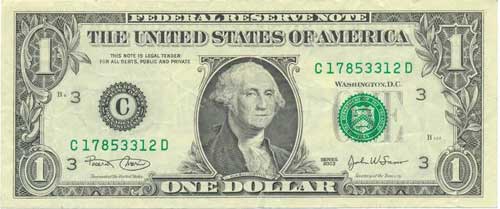 by Preston MacDougall February 27, 2006
Apparently, I am not alone. In the January 26th issue of Nature, an international team of scientists has concluded, from enormous amounts of data, that these positions cannot be known with the level of accuracy that is usually assumed for such forecasting. In fact, they presented hard evidence that the evolution of these positions was an unprecedented "ambivalent process". This is not the result of disinformation being spread by George W.'s administration, nor by his political opponents. That can be ruled out, since they are all dead now. 
Chemists and physicists have long-used Fick's first law of diffusion to accurately model the movement of molecules from regions of high concentration to regions of lower concentration. This applies to small and large molecules, whether they are in a beaker (in vitro) or a living cell (in vivo). In general, small molecules, such as sucrose, which is a disaccharide - meaning it is made from two sugar units - spread more quickly than larger denominations. But always, the speed of drift is proportional to the change of concentration in that direction - as if there were a thermodynamic force leading the process, as Fick's equation implies. The interesting thing about this otherwise pedestrian process is that the same predictions result from what are called Monte Carlo simulations done on a computer. In silico, the direction of molecular motion is purely random, and the path taken by an individual virtual molecule is best described as a "random walk". Yet, after many "runs" of the program, the overall diffusion rate precisely matches that modeled by Fick's first law, which has an implied concentration-dependent force directing the process. The Monte Carlo algorithm is now used to model everything from tissue damage after radiation exposure to defect migration in computer chips. (Your computer's hang-ups are not as unpredictable as you might think.) In the Nature article, Dirk Brockmann and his colleagues wanted to see if the spread of money obeyed the diffusion law. So how to collect the data? Their research grant wasn't large enough to just give money away, and then see what happens. Anyway, beside the expense, there would also be the complication that people probably spend money differently when others are watching, especially when the observers work for government research labs. Fortunately, the team's need for data was more than met, and for free, by the copious amounts of money-tracking data that has been, and is still being fed into the website wheresgeorge.com. What's in your wallet? At the website, you can enter the serial numbers of bills, of any denomination. You might see where they have been. You can also come back in the future to see where they have gone. The histories of over 500,000 marked dollar bills, or "Georges", were volunteered by their temporary owners over a five-year period. Not all bill-holders noticed the website stamped on their cash, and certainly many who did notice, didn't report their location. So there was randomness, but, as in the Monet Carlo simulations, there was enough data that very reliable conclusions could be drawn about the diffusion of money. For instance, like young adults, money has a slightly higher probability of leaving small towns than large cities. The biggest difference between money and molecules was that instead of a simple, unceasing random walk, money takes unpredictable leaps of varying lengths (such as by air travel) and can rest for long waiting times (such as in piggy banks). Brockmann and his colleagues have called this process "superdiffusion", and note that it may be very useful not only for economists, but also for epidemiologists. After all, if there is anything that people take with them more often than their money, it is their germs.
Publish A Letter on SitNews Read Letters/Opinions Submit A Letter to the Editor
|